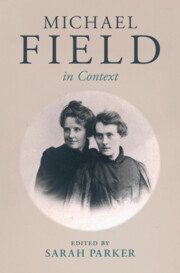Refine search
Actions for selected content:
514 results
20 - Aboriginal Song as Australian Poetry
-
-
- Book:
- The Cambridge History of Australian Poetry
- Published online:
- 19 November 2025
- Print publication:
- 11 December 2025, pp 376-399
-
- Chapter
- Export citation
12 - Philanthropy as a De-risking Tool for SDG Finance
- from Part III - Equitable Climate Transition
-
-
- Book:
- Catalytic Capital
- Published online:
- 27 November 2025
- Print publication:
- 11 December 2025, pp 263-284
-
- Chapter
-
- You have access
- Open access
- HTML
- Export citation
From goat shows to guilds: How U.S. cheesemakers built a culture of collaboration
-
- Journal:
- Journal of Institutional Economics / Volume 21 / 2025
- Published online by Cambridge University Press:
- 05 December 2025, e44
-
- Article
-
- You have access
- Open access
- HTML
- Export citation
10 - Channel Coordination
- from Part III - Channel Coordination of Relationships
-
- Book:
- Marketing Channel Management
- Published online:
- 26 November 2025
- Print publication:
- 04 December 2025, pp 209-226
-
- Chapter
- Export citation
Journey to the northeast: producing Chinese folk performances with the Japanese media industry amid empire expansion
-
- Journal:
- International Journal of Asian Studies , First View
- Published online by Cambridge University Press:
- 28 October 2025, pp. 1-21
-
- Article
-
- You have access
- Open access
- HTML
- Export citation
A creative collaboration: the arts in psychiatric research
-
- Journal:
- Psychological Medicine / Volume 55 / 2025
- Published online by Cambridge University Press:
- 28 October 2025, e323
-
- Article
-
- You have access
- Open access
- HTML
- Export citation
3 - Law and the Interaction between International Organizations
-
-
- Book:
- International Organizations Engaging the World
- Published online:
- 09 October 2025
- Print publication:
- 23 October 2025, pp 44-60
-
- Chapter
-
- You have access
- Open access
- HTML
- Export citation
11 - We Are More Than One, When We Speak Together: Collective Art, Plural Possibilities, and the Horizon of Utopia
-
- Book:
- Tied Up in Tehran
- Published online:
- 28 September 2025
- Print publication:
- 16 October 2025, pp 294-316
-
- Chapter
- Export citation
7 - Coordination
-
- Book:
- Regulating a Thousand Cuts
- Published online:
- 27 September 2025
- Print publication:
- 09 October 2025, pp 177-204
-
- Chapter
-
- You have access
- Open access
- HTML
- Export citation
5 - Introduction to Transcultural Ethnography
- from Part II - Transcultural Ethnography
-
- Book:
- Ethnography in International Business
- Published online:
- 21 October 2025
- Print publication:
- 09 October 2025, pp 127-145
-
- Chapter
- Export citation

Michael Field in Context
-
- Published online:
- 03 October 2025
- Print publication:
- 25 September 2025
Using clinician–patient collaboration to tackle structural stigma and age discrimination in borderline personality disorder
-
- Journal:
- BJPsych Advances , FirstView
- Published online by Cambridge University Press:
- 29 September 2025, pp. 1-3
-
- Article
-
- You have access
- Open access
- HTML
- Export citation
Preface
-
- Book:
- Michael Field in Context
- Published online:
- 03 October 2025
- Print publication:
- 25 September 2025, pp xv-xxi
-
- Chapter
- Export citation
Chapter 10 - Media arts and meaning-making with children in S.P.A.C.E: A living inquiry storied through place and technology
-
-
- Book:
- The Arts and Meaning-Making with Children
- Published online:
- 11 September 2025
- Print publication:
- 25 September 2025, pp 212-236
-
- Chapter
- Export citation
Chapter 4 - Collaborative Authorship
- from Part I - Works and Days
-
-
- Book:
- Michael Field in Context
- Published online:
- 03 October 2025
- Print publication:
- 25 September 2025, pp 30-38
-
- Chapter
- Export citation
Chapter 35 - Performing Michael Field
- from Part V - Afterlives and Future Fields
-
-
- Book:
- Michael Field in Context
- Published online:
- 03 October 2025
- Print publication:
- 25 September 2025, pp 333-339
-
- Chapter
- Export citation
How to Create Exhibits
- Part of
-
- Journal:
- Public Humanities / Volume 1 / 2025
- Published online by Cambridge University Press:
- 19 September 2025, e137
-
- Article
-
- You have access
- Open access
- HTML
- Export citation
Chapter 11 - Stand-Up and Politics
- from Part II - Interpretation and Meaning
-
-
- Book:
- The Cambridge Companion to Stand-Up Comedy
- Published online:
- 21 August 2025
- Print publication:
- 04 September 2025, pp 206-221
-
- Chapter
- Export citation
Enhancing infection control activities through departmental infection control facilitators
- Part of
-
- Journal:
- Antimicrobial Stewardship & Healthcare Epidemiology / Volume 5 / Issue S1 / May 2025
- Published online by Cambridge University Press:
- 03 September 2025, p. s9
-
- Article
-
- You have access
- Open access
- Export citation
5 - Emotional intelligence and self-awareness
- from Part 2 - Leads Self
-
-
- Book:
- Leading and Managing Health Services
- Published online:
- 15 August 2025
- Print publication:
- 28 August 2025, pp 54-65
-
- Chapter
- Export citation
